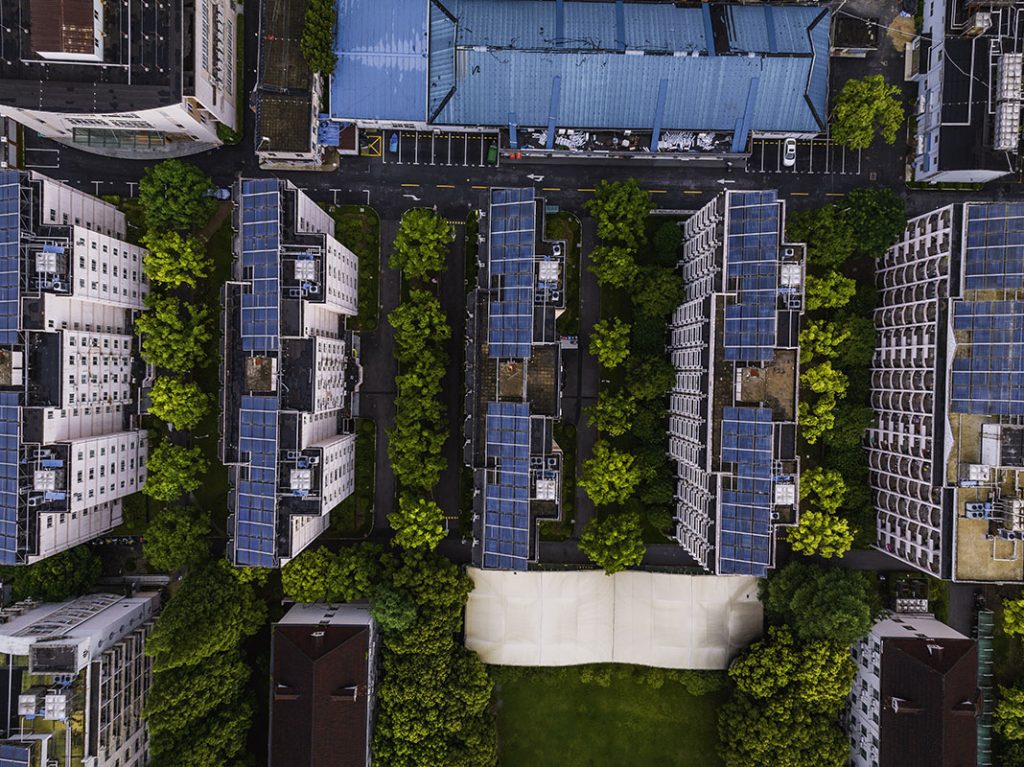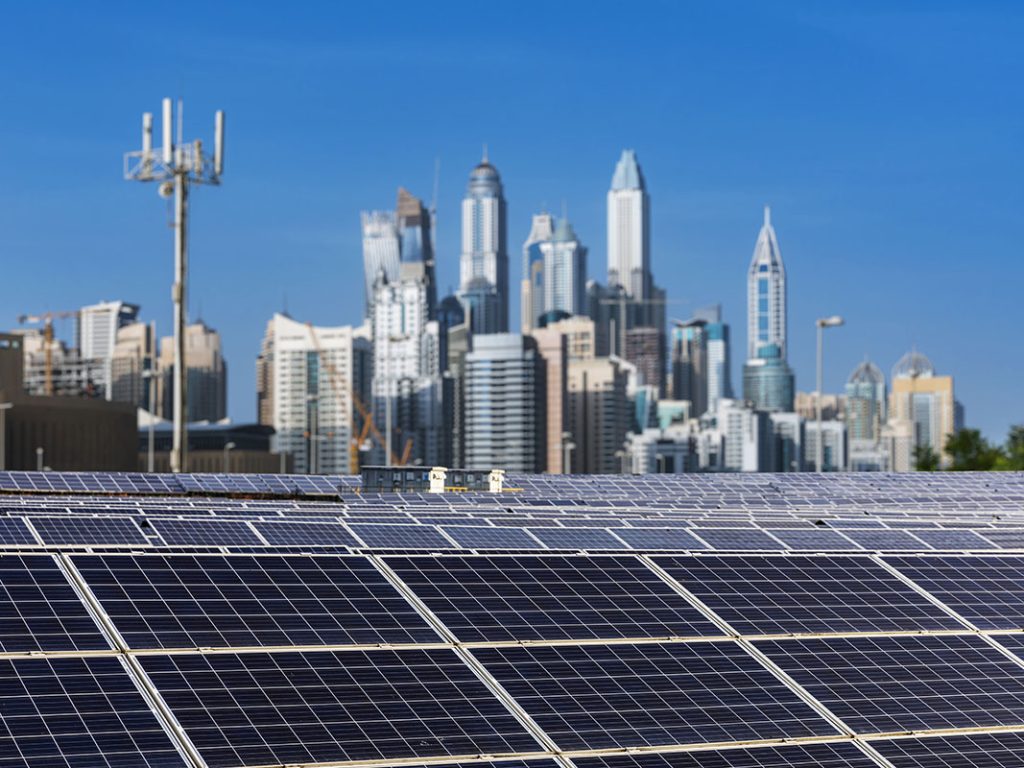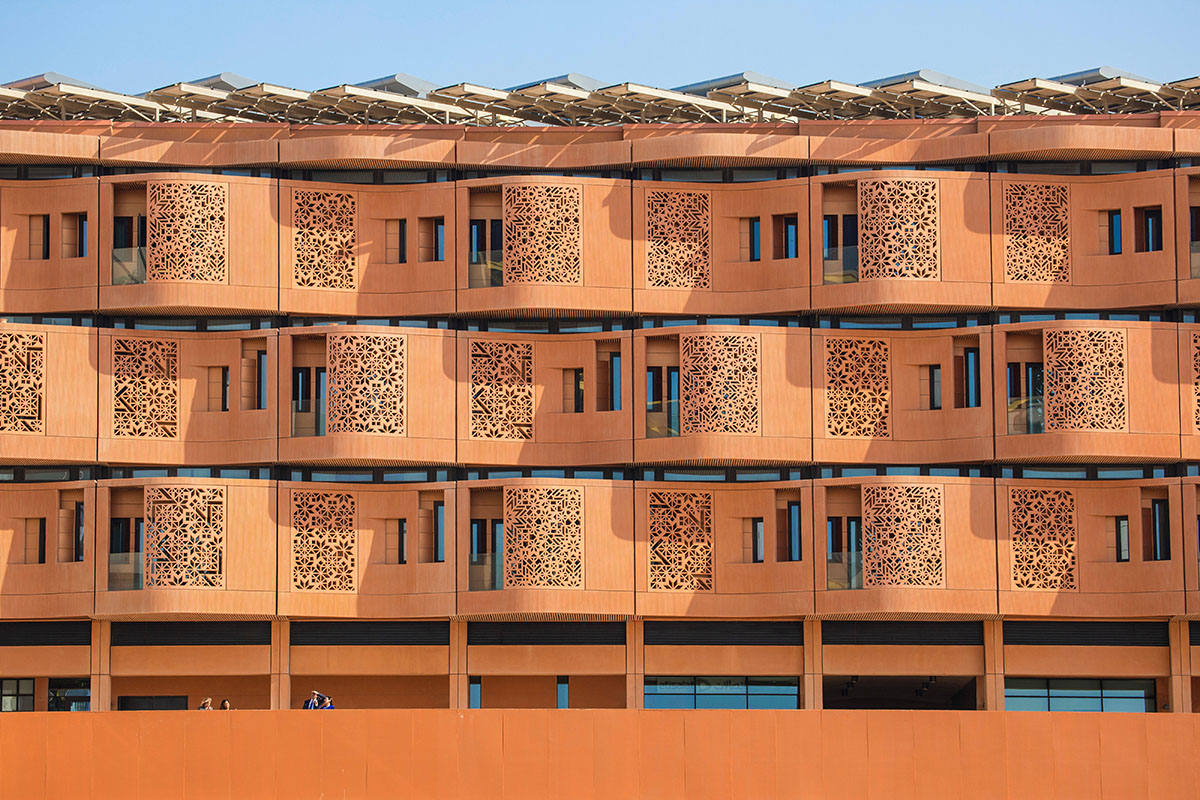Modelling energy dynamics for sustainable urban planning
Modelling energy supply and demand in different building types highlights how crucial built form and function are to urban sustainability.
With cities housing almost half of the world’s population, and consuming two-thirds of the global energy supply, the quest for more efficient and sustainable energy solutions is critical if countries are to reach net-zero targets.
“Cities and urban settlements hold great significance in the drive for sustainability, yet previous studies often have not considered individual features of the built environment and their influence on energy demand and supply,” says Ahmad Mayyas, an assistant professor of industrial and systems engineering at Khalifa University’s Department of Management Science and Engineering. “Our research seeks to shed light on these important aspects of sustainable urban planning.”
Mayyas and his team, including colleague Osama Mussawar, have developed a novel modelling framework1,2 that provides planners with a nuanced understanding of the energy dynamics of different types of urban environments. By examining the form and function of each building in a given area, the model can evaluate the energy demand and supply characteristics for that specific area.

The team used an agent-based modelling approach, which is not often used for built-environment settings, to create their framework. “Agent-based modelling is used for simulating systems with many interacting components such as gas molecules in a cylinder or tracking crowds of people,” says Mussawar. “Instead of mathematically describing the behavior of a system as a whole, this method models the behavior of each component individually to understand the system’s overall behavior.”
“Cities and urban settlements hold great significance in the drive for sustainability.”
Ahmad Mayyas
The team used data from local climate-zone classifications used in urban planning and transport applications, which specify the building type and use, to develop a modelling framework applicable to various urban settings, whether existing or planned, and to different climates worldwide.
In the first iteration of their model1, the team tested scenarios in which each building produced and consumed energy individually. They conducted a comparative case study of high-rise and low-rise urban areas equipped with rooftop solar photovoltaic systems. While the high-rise areas achieved 99% self-consumption of locally generated solar energy, this represented only 5% self-sufficiency due to dense population and high energy use. In contrast, low-rise areas with solar panels achieved more than 25% self-sufficiency.

“We then addressed a collaborative scenario in which all buildings in an urban area produce and consume energy collectively as a community2,” says Mayyas. “Such energy communities are an active area of investment for governments across the world. However, understanding precisely how different building types can interact and share resources is critical to the success of such schemes.”
“Low-rise areas show the greatest potential for developing self-sufficient energy communities and could even become areas of positive net energy.”
Osama Mussawar
This time, the model computed the energy supply and demand outcomes for each building and how it interacted within its community2. Once again, high-rise self-sufficiency remained low at less than 20%, suggesting that these urban areas have lower chances of becoming energy self-sufficient, even in an energy community setup. Mid-rise areas performed slightly better, but still relied heavily on the main power grid.
“Low-rise areas show the greatest potential for developing self-sufficient energy communities and could even become areas of positive net energy. There would be a need for local energy storage solutions to harness their full potential,” says Mussawar.
The research shows that the energy performance and sustainability of urban areas are strongly influenced and conditioned by the characteristics of urban built environments including building height and compactness, and land use.
“Our findings can help in urban planning, particularly in context-specific development and deployment of energy solutions and policies,” Mayyas concludes.
References
- Mussawar, O., Mayyas, A., and Azar, E. Built form and function as determinants of urban energy performance: An integrated agent-based modelling approach and case study. Sustainable Cities and Society 96 104660 (2023). | Article
- Mussawar, O., Urs, R.R., Mayyas, A., and Azar, E. Performance and prospects of urban energy communities conditioned by the built form and function: A systematic investigation using agent-based modelling. Sustainable Cities and Society 99 104957 (2023). | Article




